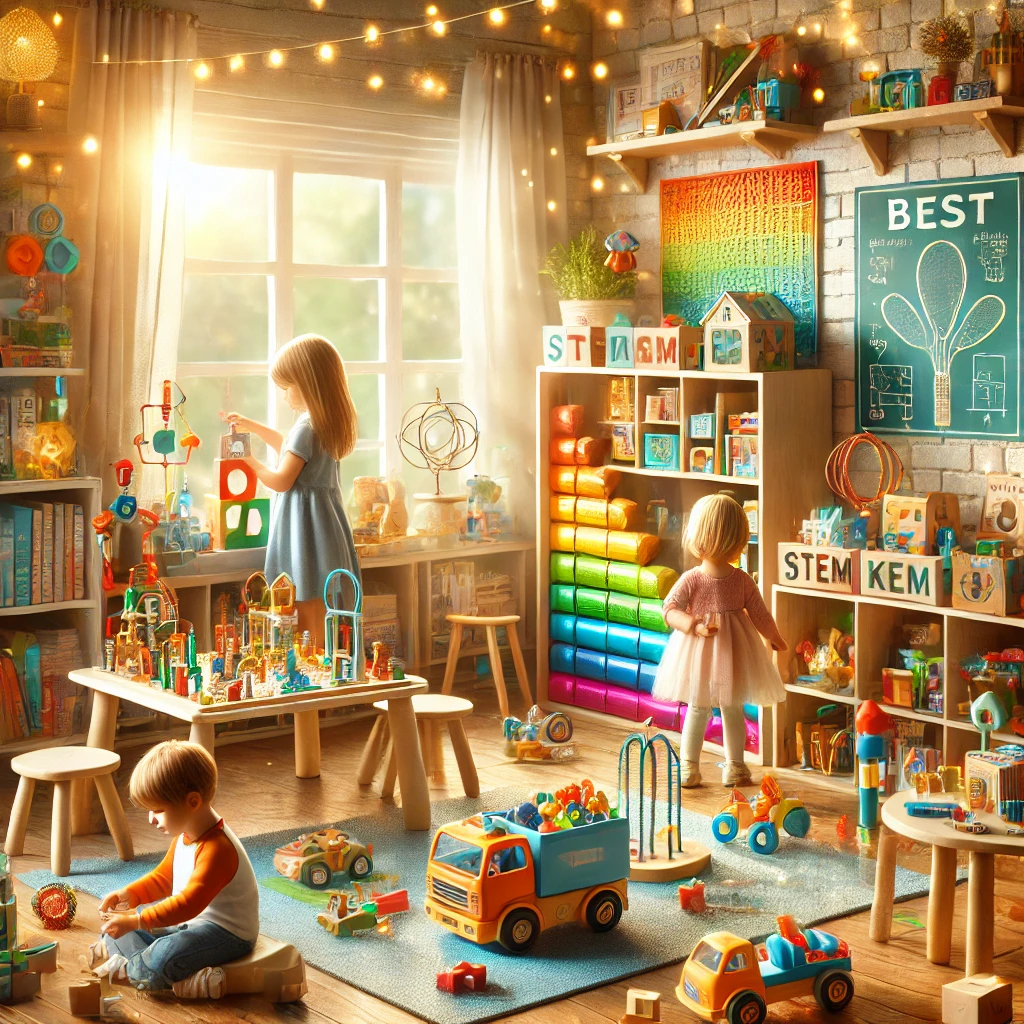
Best Educational Toys for Fostering Independent Learning
Discover how the right educational toys can spark curiosity, build problem-solving skills, and help your child become a confident, independent learner.
Why Independent Learning Matters
Independent learning is a crucial skill that helps children develop confidence, critical thinking, and problem-solving abilities. When kids learn how to explore, question, and experiment on their own, they gain skills that will serve them for life.
How Educational Toys Support Independent Learning
Not all toys are created equal! The best educational toys are designed to challenge young minds while keeping them engaged and entertained. They promote creativity, logical reasoning, and hands-on problem-solving.
Top Educational Toys for Every Age Group
For Toddlers (Ages 1-3)
1. Stacking Blocks & Shape Sorters
These classic toys teach hand-eye coordination, spatial awareness, and basic problem-solving skills.
2. Musical Instruments
Simple instruments like xylophones and drums introduce rhythm, sound recognition, and motor skills.
For Preschoolers (Ages 3-5)
3. STEM Building Kits
From magnetic tiles to simple construction sets, these toys encourage creativity and early engineering skills.
4. Interactive Storybooks
Books with sound buttons or augmented reality features make reading fun while improving language skills.
For Elementary School Kids (Ages 6-10)
5. Coding Games and Robots
Introduce programming logic in a fun way with coding robots and puzzle-based coding games.
6. Science Kits
Whether it's a DIY volcano or a crystal-growing set, science kits inspire curiosity and a love for experiments.
For Tweens and Teens (Ages 11+)
7. 3D Puzzles and Brain Teasers
These challenge young minds to think critically and improve problem-solving abilities.
8. DIY Electronics Kits
Perfect for future engineers, these kits teach circuits, coding, and hands-on STEM skills.
How to Choose the Right Educational Toy
- Age-Appropriateness: Ensure the toy suits your child’s developmental stage.
- Encourages Exploration: Look for toys that promote curiosity and problem-solving.
- Interactive & Engaging: Toys that require active participation are best for learning.
- Durability & Safety: Always check for high-quality materials and safety certifications.
How to Create a Positive Learning Environment at Home
Beyond toys, your home setup plays a huge role in fostering independent learning. Here’s how to create an ideal space:
- Have a dedicated learning area free from distractions.
- Encourage open-ended play to boost creativity.
- Balance screen time with hands-on learning activities.
- Incorporate real-world learning through simple household experiments.
Balancing Work-Life and Encouraging Independent Learning
Juggling work and parenting? We get it! Finding the right balance is key to fostering independent learning while managing your responsibilities.
Top Tips for Parents:
- Set a flexible schedule that allows time for both work and play.
- Use the best apps for helping kids with homework to make learning smoother.
- Encourage self-directed play with educational toys to keep kids engaged while you work.
- Practice effective communication with teenagers to understand their learning needs.
Final Thoughts
Educational toys are more than just playthings – they’re powerful tools that encourage problem-solving, creativity, and independent learning. Choosing the right ones and fostering a supportive learning environment can set your child up for success.
FAQs
1. What are the best educational tools for kids in 2025?
Some of the top choices include AI-powered learning games, interactive STEM kits, and coding robots that make learning fun and engaging.
2. How can I encourage creativity in children?
Provide open-ended toys, encourage storytelling, and give them the freedom to explore and create without strict guidelines.
3. What are some affordable ways to create fun learning activities?
DIY science experiments, homemade board games, and everyday household objects can be used to make learning fun and cost-effective.
4. How do I manage my child’s screen time effectively?
Set time limits, use educational apps, and balance screen time with offline learning activities like puzzles, books, and hands-on play.
5. What are the top parenting challenges and how can I overcome them?
From work-life balance struggles to managing tantrums, the key is consistency, patience, and using positive reinforcement techniques.